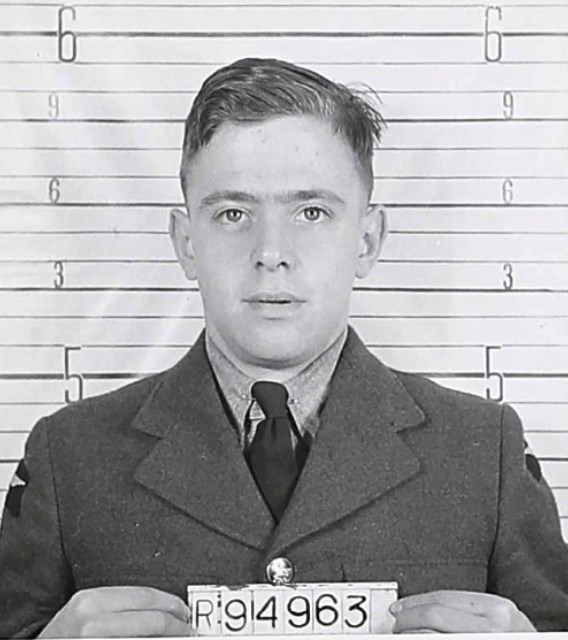MOOSE JAW — Residents in the Netherlands plan to honour deceased Moose Jaw airman James Francis Smith with a 小蓝视频 and are hoping that he has living relatives who can attend.
Smith — the son of Carl W. and Beatrice M. Smith and twin brother to John — served with the Royal Canadian Air Force’s 425 Squadron as a warrant officer class II/flight sergeant in the Second World War and flew in a Vickers Wellington bomber.
On the night of April 8-9, 1943, a bomber with the call sign KW-Q crashed in Hout-Blerick, Netherlands. The airplane had been stationed at the English base of Dishforth and was on its way back from a mission to Duisburg, Germany, when flak hit it near the Dutch community of Venlo.
A major German airbase was situated at Venlo and played a crucial role in providing air defences in the southeast corner of the Netherlands.
The five-man bomber crew, consisting of one Englishman and four Canadians, were killed in the crash. After first 小蓝视频 buried in Venlo, the men eventually ended up at the Commonwealth War Graves Commission cemetery of Jonkerbos in Nijmegen.
To commemorate this crash, a Dutch community group called “Hout-Blerick, 80 Years Liberated” — the Allies freed that community in November 1944 — plans to erect a sign in Venlo to honour the aircrew.
The organization also has help in putting together the sign from heritage group Blariacum, the Planehunters Recovery Team and “Airplane crashes and emergency landings WW2 in the municipality of Boxmeer.”
This will be the first sign erected in Venlo to honour Allied airmen who died helping liberate the country. Meanwhile, the third-mentioned group has already placed signs and a monument in the former municipality of Boxmeer to commemorate other Allied flyers.
These three groups plan to install a series of information boards about the five airmen near the crash site and will hold a 小蓝视频 on Saturday, Nov. 23 to unveil it. The program begins at 1 p.m. and concludes at 3:15 p.m. with the unveiling of the boards and memorial plaque.
Dignitaries expected to attend include the Canadian, British and Panamanian ambassadors, NATO members, Dutch-based Royal Air Force members, and other municipalities.
Leo Janssen, chairman of the group “Airplane crashes and emergency landings WW2 in the municipality of Boxmeer,” explained by email that between 6,000 and 6,500 Allied and German airplanes crashed in the Netherlands in the Second World War. While more than 4,000 sites have been found, the outstanding numbers remain too high.
In Boxmeer, 11 Canadian airmen were killed and five survived when their planes crashed there. In total, 43 Allied and German airmen were killed in action over the community and 44 survived their crashes.
“We noticed that many young men from Manitoba and Saskatchewan were involved. Our goal is to give the mostly young heroes a face,” Janssen said.
“We place their picture at the grave, put candles on the graves at Christmas Eve (and) place flowers on anniversary days — especially this year (as) we celebrate our 80th anniversary (of liberation).”
Janssen credited a “brilliant” Canadian researcher by the name of Janise McLelland for helping conduct research about the men they’ve honoured on previous projects. However, the group is now reaching out to communities where the deceased airmen were born in hopes of finding relatives who can provide more information and who could attend future ceremonies.
Anyone connected to James Francis Smith can contact Janssen on WhatsApp at 0 (031) 478 582175 or by email at .




